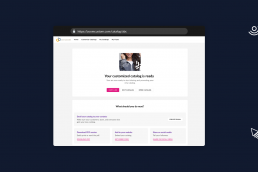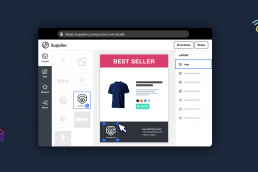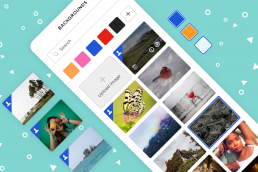How to Create Videos & Grow Sales
When it comes to sheer ROI, video is an undeniable powerhouse. Over 80% of marketing professionals report significant increases in website traffic when they use video to highlight their products and services. When it comes to getting eyeballs on your products, video can’t be beat. And, ZOOMcatalogs can be video-enabled, which really helps bring product content to life.
In the promotional products industry, however, video content is severely underutilized. Consider this stat we pulled from our recent industry report: 61% of suppliers produce and share high-quality product videos, but only 39% of distributors are using video in their marketing campaigns.
That means there’s a huge opportunity for you to stand out and lead the way with engaging videos. But where do you start? We’ve got you covered.
Choose the Right Style
When creating a video strategy, pick a style that best fits your project. There are plenty of different kinds of video, and they all have their own advantages. Here’s a sampling of some of our favorites.
- Animated Explainer Videos: If Pixar’s proven anything, it’s that everyone can connect with a good animated video. Explainer videos work best when you’re highlighting a service or a piece of software.
- Storytelling Videos: A good story is the easiest way to evoke strong emotions in your customers. Storytelling videos boil down the emotional core of your company or product. See how HPG uses storytelling to captivate their audience.
- Lifestyle Videos: While product turnarounds are important, showing off your products in real-world settings can create a huge emotional impact. For an example of a great integrated digital marketing campaign see how Gemline produced a lifestyle video, with a companion Spring Lookbook.
- TikTok/Meme Videos: Usually quickly made with cellphones, TikTok and Meme-style videos go viral when they achieve the trifecta of humor, timeliness, and authenticity.
- Motion Graphics Videos: From animated text to Ken Burns-style photo slideshows, motion graphics videos are easy to create and work great when you’ve only got about 30 seconds to get your idea across.
Example: We went with the motion graphic option for our Expo booth video. Check it out.
Producing Your Video
So you’ve picked the best style for your project, now you need to actually produce the video. There are three different routes you can go down:
Get Friendly with Agencies and Freelancers
This is the easiest option, but it still requires work (and money). Agencies are your “full service” option. They can help you through every aspect of the video’s production from scriptwriting to filming and even helping you flesh out your campaign strategy. Of course, agencies are also expensive.
Freelancers can deliver just as high-quality work, but you’ll have to do more work on your end (or hire more freelancers a la carte for additional services). Here at ZOOMcatalog, we’ve used Fiverr to find great freelance support. Be sure to examine their portfolios before making your final decision.
Regardless of whether you go with an agency or with freelancers, you should prepare your ideas and gather some materials ahead of time. Make sure you know what you want out of your video–define your goal. It also helps to gather up examples of videos you want to use for inspiration.
As the production process goes on, it’ll be important to provide timely feedback every step of the way. As skilled as agencies and freelancers are, they’re not mindreaders. Expect to see scripts and storyboards during the early days of the production. Getting all of your comments to them during this stage will help ensure the timely delivery of your final product.
Become a Homegrown Video Star
If you want more control over your project (or don’t have the budget to hire outside help) you can leverage the DIY vibe popular on social media. Unboxing videos, reaction videos, TikTok dances, and video memes–these videos dominate social media, and they can be made with only a cellphone. A stellar example of crushing social media in promo comes from Britney Godsey of Gold Bond. Her Instagram feed is overflowing with creative content.
Even if you’re going for a do-it-yourself feel, you’ll still want your videos to have a quality look and feel. That’s why, if you’re going to go it on your own, it’s a good idea to have a basic understanding of proper framing, lighting, and sound.
Nearly a year’s worth of Zoom calls have made all of us at least passingly familiar with the dos and don’ts of video, but it never hurts to have a refresher.
- Keep your light source in front of you.
- Watch out for busy or cluttered backgrounds.
- Make eye contact with the camera.
- Pay attention to ambient noise. Avoid windswept porches and noisy backyards.
Finally, familiarize yourself with some simple (and inexpensive) video editing apps like LumaFusion or iMovie. There are plenty of good online tutorials and classes available on platforms like Skillshare or YouTube that will get you up and running on these apps in no time.
Build Your Own Production Studio
This last option works best if you’re already set up with a good in-house photography studio or similar, or maybe you’ve been trying your hand at the homegrown route long enough and you want to level up your production quality. SnugZ is one supplier that produces amazing videos in-house. Check out the “Media Hive” on their website for some inspiration.
Start by investing in good equipment. The cutting edge tech is constantly changing, but a decent DSLR with video capabilities, a versatile tripod, and a good lighting setup will get you most of the way there. Add in a good microphone (or two if you want to do interviews), a mixer, and you’re good to go.
The simple editing apps will still work with your new professional setup, but you might want to expand your skillset into more industry-standard software like Adobe Premiere or Final Cut Pro.
One final tip if you’re going completely in-house with your video production, make sure you invest in good computer storage. Video files are pretty beefy, and they’ll quickly eat up your laptop’s hard drive space if you don’t have an external backup option.
You Have Your Video Content, Now What?
First things first, if you’re a supplier get that content into your catalogs. Only 12% of suppliers are using video in their digital catalogs. Take advantage of this untapped feature of ZOOMcatalogs.
For distributors: start sharing your video content and use it to enhance your emails, website, and social media posts. And, remember many suppliers have done some of the work for you. We have a comprehensive list of video-enabled catalogs you can promote right now.
If you’re looking for more ways of harnessing the power of video content, check out our Trends article from last August, “4 Ways to Increase Sales with Video.”
And if you want more examples of companies that are doing video right, check out our Going Digital interview with Ben Pawsey from HPG.
ZOOMcustom has a new and improved catalog share page
Last month we released a big update to one of the most used parts of ZOOMcustom - the share page. Learn about the new page and what it…
Feature Releases: Reusable templates in ZOOMstudio and more
ZOOMstudio templates are here! You, the Suppliers, can now set up reusable templates for your sales team and distributors.
New in ZOOMstudio, Better Backgrounds!
Today we’re introducing a feature that will make creating beautiful flyers, social images, presentations, and other marketing materials…
Feature Releases: June 2019
Layer locking, improved image handling, product labelling, and fully editable pricing tables are just some of the great improvements our…
- 1
- 2




